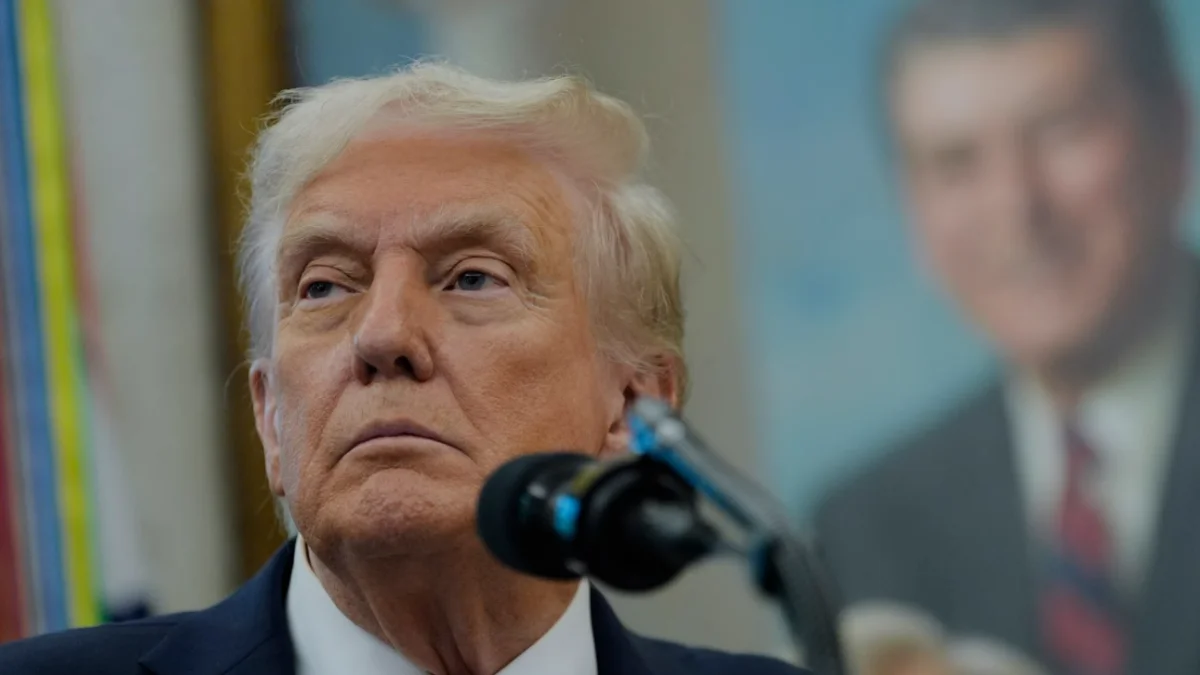Trump Tariffs Reshape Global Trade Landscape
Rising tensions in global trade policy have reached a new peak as Donald Trump introduces aggressive tariffs targeting multiple sectors. From Chinese imports to foreign films the policy shift is designed to place America First but the wider impact is being felt across industries worldwide.
Key Highlights of the Tariff Announcement
- Tariffs imposed on heavy trucks lumber pharmaceutical products and entertainment imports
- Government claims the move will revive American manufacturing
- Economists warn of rising consumer prices and disrupted supply chains
- Several countries signal possible retaliation
- Policy seen as both economic reform and political strategy
Trump Slaps 100% Tariffs on Indian Drug Imports — India Issues First Response
Why Trump Says Tariffs Are Necessary
Trump argues that foreign nations especially China have benefited for too long from cheap exports to the United States. His goal is to push companies to produce domestically.
Supporters believe the tariffs will
- Encourage factory relocation to US soil
- Increase employment in steel wood and auto sectors
- Reduce dependency on foreign supply chains
Economic Concerns from Experts
Not everyone is convinced. Financial analysts foresee challenges that could slow down growth instead of boosting it.
Major concerns raised include
- Retail prices could rise due to costlier imported goods
- Small businesses may struggle with expensive components
- Trade partners may impose counter tariffs in response
Entertainment Industry Shocked by Film Tariffs
One of the most surprising aspects of the policy is the 100 percent tariff on foreign produced films. Theatre owners fear a reduced selection of global content while Hollywood expects increased dominance. Whether audiences will accept limited variety remains uncertain.
Trump’s Tariff Gamble: Protectionism, Politics, and the Battle for American Manufacturing
Political Strategy Behind the Move
Observers suggest the timing of the announcement is designed to energize working class voters ahead of future elections. Manufacturing towns that suffered from past job losses may view tariffs as a return to industrial strength.
What This Means for Global Trade
The world now waits for the next move.
- China has condemned the decision calling it political aggression
- European Union officials are considering coordinated responses
- International markets are bracing for volatility
Whether the tariffs lead to long term renewal or trade conflict will depend on how industries and governments react in the coming months.
FAQ
-
What products are currently affected by the tariffs
Heavy trucks lumber pharmaceuticals and foreign entertainment content -
What is the primary goal of the tariff policy
To protect American manufacturing and reduce reliance on foreign imports -
How will this impact everyday consumers
Prices of imported goods may increase leading to higher cost of living -
Are other countries planning to respond
Several nations have suggested countermeasures including tariffs on US goods -
Will the tariffs truly create American jobs
Supporters believe so but economists argue that results depend on company investment and long term policy stability
The tariff battle is far from over. The coming weeks will determine whether this strategy becomes a symbol of national strength or the beginning of a costly trade standoff. Readers around the world watch closely as the stakes rise on every side.

